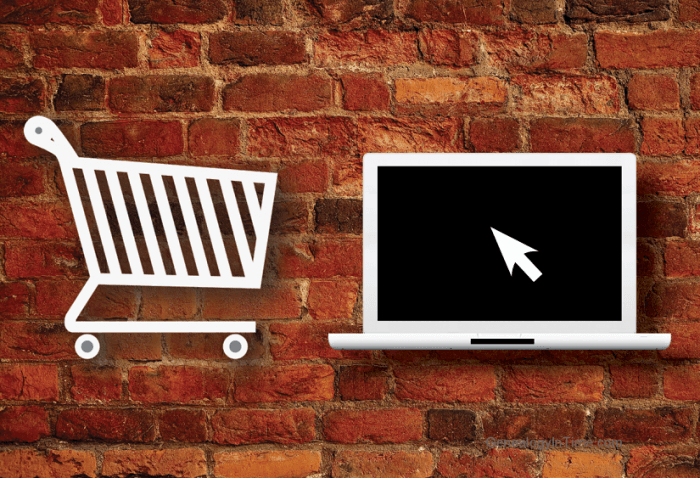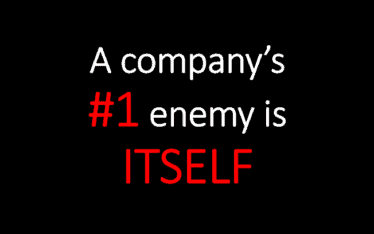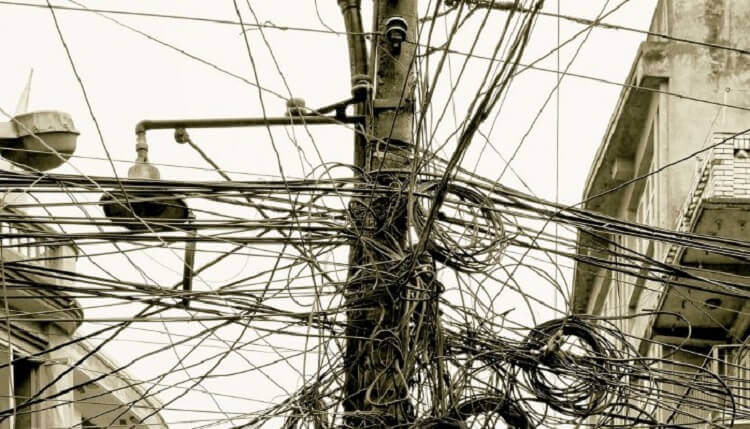Disruptive change is sweeping traditional bricks and mortar. In the retail arms race, e-commerce seems to be winning. Here are some major disruptive change trends driving traditional bricks and mortar towards the “grave”:
#1 – A losing cost structure
When you purchase an item at Bloomingdale’s (department store chain), odds are that it’s been marked up at least three times. Once when it changed hands from the factory to the brand, again as it passed from the brand to Bloomingdale’s, and once more as it goes from Bloomingdale’s into your shopping bag. The result is a purchase price that’s some ungodly multiple of the item’s actual cost, usually between 2x and 5x.
Brands that operate exclusively online eliminate that last markup by selling directly to consumers. By taking ownership of the design, curation and retail aspects of the business, these companies can keep hefty margins for themselves while still undercutting brick-and-mortar competitors on price. And because their stores are made out of bits instead of stone, they don’t face the costs of maintaining unwieldy networks of physical locations.
#2 – A bricks-and-mortar business costs vastly more
A bricks-and-mortar business costs vastly more to run than a website. Thanks to high rents, business rates and staffing costs, traditional retailers operate at a competitive disadvantage to nimble, web-based rivals.
#3 – Huge warehouses full of stock
Online retailers have huge warehouses full of stock. Instead of offering, say, 5,000 to 10,000 different products, their product ranges and stock levels are magnitudes greater. For example, Amazon has 1.5 million different books for sale – a range that cannot be matched by any high street outlet.
#4 – Free delivery and free returns
Even if shipping costs don’t negate the price savings of online shopping, they’ve long acted as a source of friction. Asking consumers to factor in some uncertain, variable transaction cost is never a good way to do business, and asking them to pay for returns is even worse. The experience of returning an online purchase, paying two-way shipping costs and ending up with nothing is enough to make anyone wary of online shopping.
Tony Hsieh and Zappos figured this out long ago and built a $1.2 billion business on the idea of free shipping and free returns. This policy is now de rigeur for serious, full-price e-commerce companies.
The reason is very simple. According to Amanda Bower, a business professor at Washington and Lee University, online shoppers given free returns increase their spend on the same site by 50 to 350 percent in later purchases. When they had to pay for return shipping? The value of their purchases decreased.
Free shipping and returns will be standard for e-commerce companies from now on. One less reason to schlep to the mall.
#5 – Rapid product evolution and innovation
Thanks to innovation, PCs, smartphones and tablet computers rapidly evolve. These days, “must have” products are constantly being launched, leaving traditional retailers struggling to manage stock levels. On the other hand, online retailers with streamlined systems and superior stock control gain a competitive advantage when replacing unsold and outdated stock of consoles,
#6 – Subscription commerce
Call it the “set it and forget it” school of business. The bottom line: People are lazy and certain items just make sense to receive once a month.
The foundation of the model is recurring revenue, where customers sign up to receive a monthly shipment for a set monthly fee. This is attractive to companies because it creates a steady, predictable revenue stream. It’s attractive to consumers because the system is convenient and usually cost-efficient compared to alternatives. Dollar Shave Club, for example, ships men’s razors to customers once a month at a fraction of the cost of an in-store purchase. Men save money and a trip to the convenience store. And because DSC sources their razors directly from the manufacturer and sells them directly to the customer, they still enjoy comfortable margins.
Frank and Oak deploys a more complex model that attempts to coax volume from loyal customers. The company allows shoppers to choose three items of clothing from a monthly collection. After receiving the items, customers try them on at home, then decide which they’ll keep and which they’ll return–all for free of course. Customers then pay for the clothes they want and return the others.
#7 – Fit without the fitting room
As ecommerce continues to gain popularity, one major roadblock has come to the forefront: not being able to physically try. But a new wave of companies have introduced a “try before you buy” concept.
There are two categories of players here: Companies that offer custom, tailored clothing online, and those that rely on new technologies to guide customers to a better fit.
The first is popular with men’s clothing companies like J. Hilburn, Indochino and Blank Label selling tailored suits and shirts at a discount to conventional custom options. The appeal here is the sudden accessibility of tailored clothing, both in terms of price and convenience. Because of the price structures discussed above, they can get away comparable quality at reasonable prices while still making a profit.
The second category is more interesting and will have more far-reaching consequences for the future of retail. First we have the incremental innovation of companies like Clothes Horse and True Fit, which ask shoppers for their measurements, along with a tally of their best-fitting clothes, to match them with the right sizes. Frank and Oak, Bonobos and women’s retailer Nicole Miller use Clothes Horse while Macy’s employs True Fit to increase conversions. True and Co. uses similar methods to match women with well-fitting bras.
Even larger leaps in sizing technology are being made by companies like Acustom Apparel, which uses 3D body scanners along with pattern-making software to scale the creation of custom-fitted clothing at a digestible price point.
At some point, data about your body type will be saved along with your credit card information and you’ll never have to visit a fitting room again.
Short URL & title:
Disruptive change driving traditional bricks and mortar towards extinction — http://www.torbenrick.eu/t/r/atw
Share it:
If you enjoyed this article, please take 5 seconds to share it on your social network. Thanks!








There are some interesting new hybrid models emerging.
Some retailers are experimenting with limited product inventory in the stores so customers can actually touch and feel the product (shirt, skirt etc.) and find the right size, but the retailer does not have to stock every colour and size in the store. The customer’s desired product is then ordered online from within the store and shipped to them from a warehouse. Smaller stores required and better inventory management.
Another good example is car dealerships. They usually have upwards of 150 vehicles in stock at the dealership which requires a lot of land. This is not cost effective or even feasible in many urban cores. Audi has recently opened a virtual dealership in the centre of London, England. I believe they have one car in the store for the ‘upclose look and feel’ experience and have incredible, large, digital displays to demonstrate all available models and features. Nice solution.
Australia is bit behind the 8 ball, but online MTM outfits such as George & King are slowing growing in popularity from down under. They are driving innovation via virtual measurements, aforementioned free delivery and returns plus regularly pop up events to supplement their online sales channel. This means lower cost base aand better use of their cashflow for further product and service innovation.